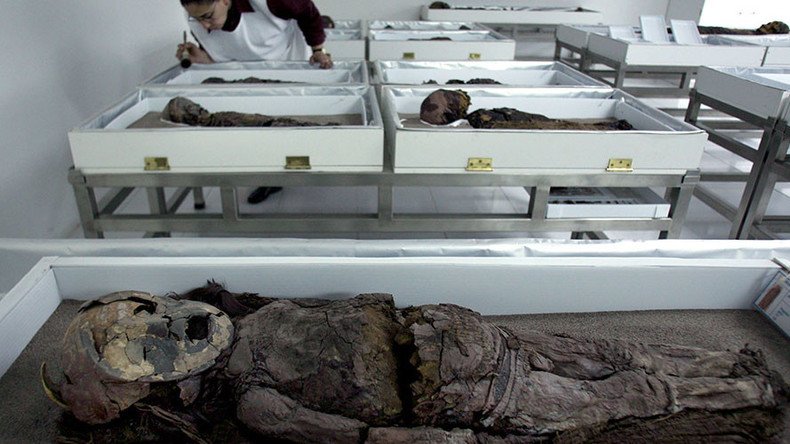World’s oldest mummies undergo scans & DNA tests to shed light on ancient anatomy

The world’s oldest mummified remains have gotten medical attention more than 7,000 years after being left by the Chinchorro civilization in what is modern-day Chile. They are getting tomography scans and DNA analysis to provide clues about ancient humans.
Fifteen of the mummies, mostly children and unborn babies, were put through computerized axial tomography (CAT) scans last week at the Los Condes clinic in Santiago, Chile, AFP reported on Sunday.
“We collected thousands of images with a precision of less than one millimeter,” said chief radiologist Marcelo Galvez.
Researchers are now set to perform a virtual facelift on the ancient mummies, reconstructing their facial features and muscles by using hi-tech processing.
“The next phase is to try to dissect these bodies virtually, without touching them, which will help us preserve them for another 500,000 years," Galvez said.
He went on to state that researchers want to see what the Chinchorro people physically looked like, and “bring to life someone who died thousands of years ago."
DNA samples will also be taken, so that researchers can “understand their way of life – from their diet to whether we Chileans still carry their genes,” Veronica Silva, the head of the anthropology department at Chile’s National Museum of Natural History, told AFP.
Researchers are also hoping to learn more about how the Chinchorro – a hunting and fishing people who lived from 10,000 to 3,400BC on the Pacific coast of South America – mummified their dead, particularly as their mummies are the oldest in the world.
“The Chinchorro mummies date to 7,400 years ago. That is to say, this system... existed 2,000 years before the first mummifications even began in Egypt,” Silva said.
The ancient civilization's mummification process involved removing the skin and muscles of the deceased. They would then reconstruct the body around the remaining skeleton by using wood, plants and clay. They then sewed the original skin back on, along with a mouth, eyes and hair. A mask was then placed over the face, resulting in something between a statue and a person.
However, the CAT scans have already produced at least one surprise, with researchers learning that the smallest mummy wasn’t actually a mummy at all.
“There was no bone structure inside. It was just a figurine, possibly a representation of an individual who could not be mummified,” Silva said.
Around 180 Chinchorro mummies have been discovered since 1903, all of which were found outdoors, near the beach, as the Chinchorro did not build pyramids or other structures to house them. The civilization left behind only its mummies, leaving no other traces of its existence.
The use of CAT scans on the mummies comes less than two months after researchers appealed to UNESCO to grant the mummies World Heritage status, in an effort to find a way to stop them from decaying into black slime.













